We went on a tour of Manchester’s most controversial developments as campaigners fight for city's soul
and live on Freeview channel 276
Manchester’s skyline has changed dramatically over the last few years. But while many people are looking up in wonder at the city’s shiny new towers, there are others who are looking more carefully, and often with concern, at what is happening at ground level.
The members of SAVE Britain’s Heritage are among the latter. The conservation group recently published a 31-page report into the effect’s rapid development has had on Greater Manchester, focusing on the city centre, Oldham and Rochdale, and how the preservation of historic buildings currently at risk could form an important part of the region’s development.
Advertisement
Hide AdAdvertisement
Hide AdTo them, protecting at-risk buildings is not about nostalgia or preserving history for the sake of it, but looking at how these changes affect the city’s identity and, more importantly, how these heritage sites can best serve the people that use them. There’s also an environmental aspect to their work. Demolishing and rebuilding results in far higher carbon emissions than repurposing historic spaces to fit modern-day needs, which was a factor of their recent successful campaign to save the M&S on London’s Oxford Road from demolition and rebuilding - although M&S have since announced they will be appealing the inquiry results.
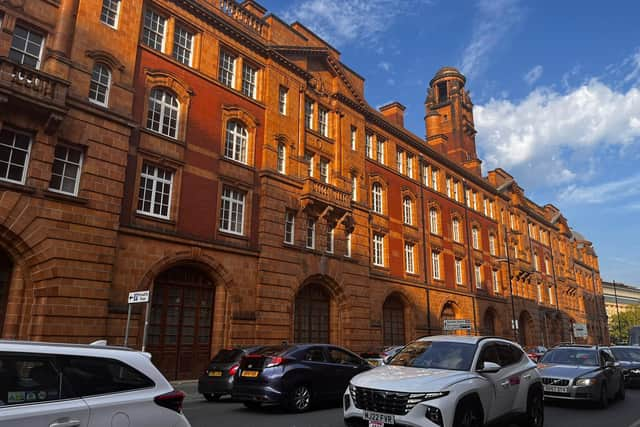

The new Greater Manchester report begins with a foreword from the organisation’s director Henrietta Billings, which includes some eye-opening figures about Manchester’s changing skyline. SAVE estimates that 27 towers up to 65 storeys have been built in Manchester since 2018, and there are currently around 71 towers either under construction or that have planning permission. In Castlefield alone, eight towers have been built in the last five years and 17 more are under construction or approved.
We went along to SAVE Britain’s Heritage report launch and guided tour to find out more about the lesser known heritage sites in the city centre and the role they could play in Manchester’s future. The tour was led by one of the report’s co-authors Eamonn Canniffe, who runs the Architecture and Urbanisation MA program at Manchester School of Architecture.
Here are some of the places we visited, including controversial developments and examples of how the city has changed over the decades.
Advertisement
Hide AdAdvertisement
Hide AdSt Michael’s
The first stop on the tour was the St Michael’s development, or Football Towers, as our guide called it, referring to the project’s backer, former Manchester United star Gary Neville. This development has proven controversial from the outset, namely due its location within a conservation area and proximity to perhaps Manchester’s greatest historic landmark, the Town Hall.
The £400m development includes office spaces, a luxury hotel and restaurants, as well as a 41-storey tower. It is being built on the site of the former police headquarters, the facade of which will remain, as a nod to the history of the area. SAVE worked with Manchester Civil Society in 2018 to try and reverse the council’s decision to green light the project, but were unsuccessful.
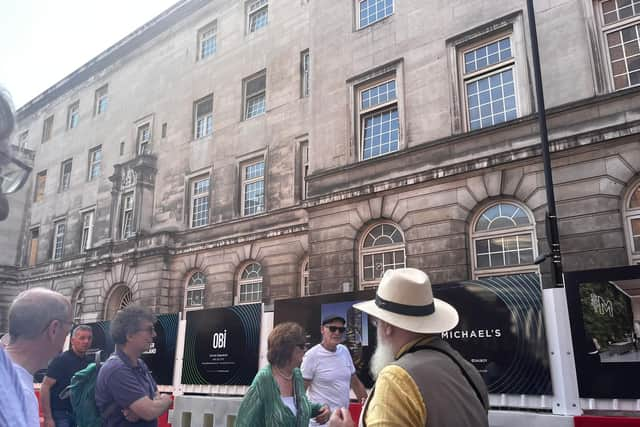

Instead the development has been lauded by some of the city’s leadership. Council leader Bev Craig has called it “a defining regeneration project for our city centre” in anticipation of the amount of investment it will bring to the city centre. It is also being advertised as Manchester’s first ‘fully net-zero carbon commercial development.’
Neville did recently decide to u-turn on plans for the nearby Sir Ralph Abercromby pub, which was previously slated for demolition as part of the project. The same cannot be said for the Manchester Reform Synagogue, the only one in the city, which shut its doors in 2022 to make way for St Michael’s.
Advertisement
Hide AdAdvertisement
Hide AdReedham House
One of the building’s that SAVE Britain’s Heritage has recently gotten involved with is Reedham House, located on King Street West and, like St Michael’s, within a conservation area. Today, it is office and retail space, but it was once a carriage works, built in the 1840s. The interiors were all retrofitted in the fifties and sixties, meaning the inside of the building is nothing special, however it is one of, if not the last remaining carriage works in the country.
In July, consultation began on planned development for the site which will see the partial demolition of the grade II-listed building and the construction of a 13-storey tower. The issue here, according to SAVE and other organisations campaigning for its survival, is its impact on the townscape of the city centre and its historical areas.
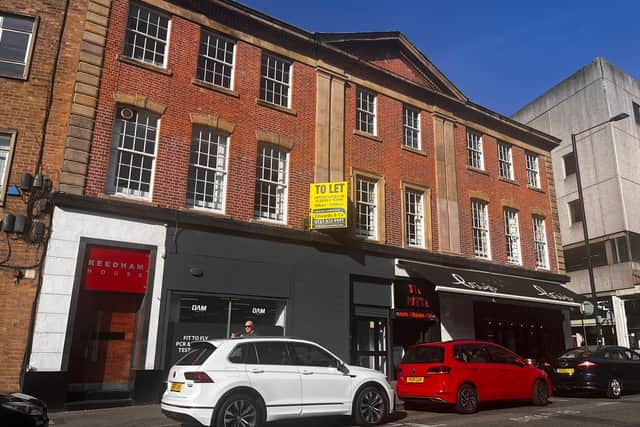

King Street
King Street is another example of how the use of historic areas of Manchester has changed over the years. It was once a busy retail area but now there are numerous empty units. Most of the recent new openings on King Street have been restaurants and cafes, which on an unseasonably warm September afternoon is pleasant to see, particularly with the post-pandemic trend for more European-style outdoor seating. But it is likely to be a different case in the winter. This is neither a good thing or a bad thing, but it does highlight how the decisions made by developers and the council affect how people use these spaces.
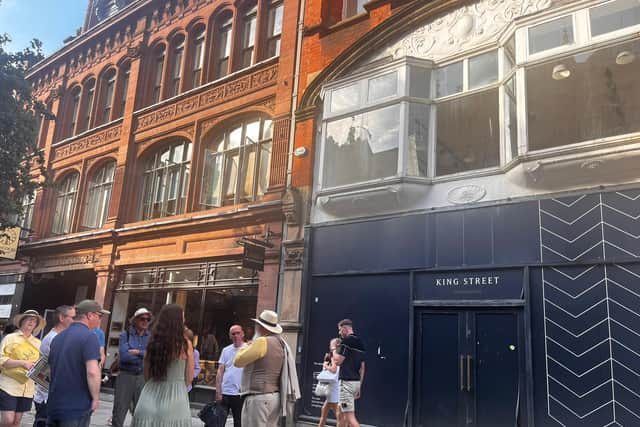

Renold building
One of the final stops on the tour was somewhere I, a born and raised Mancunian, had never been before. Just off Sackville Street and behind Vimto Park, there’s a now abandoned part of the UMIST campus that has been earmarked for demolition.
Advertisement
Hide AdAdvertisement
Hide AdLove it or hate it, the site has some fantastic examples of modernist architecture and a courtyard with green spaces. It is set to be redeveloped by Bruntwood SciTech and the University of Manchester into an innovation district. Our guide on the tour noted the site’s importance to developers – its location to HS2, which could be decades away from becoming a reality.
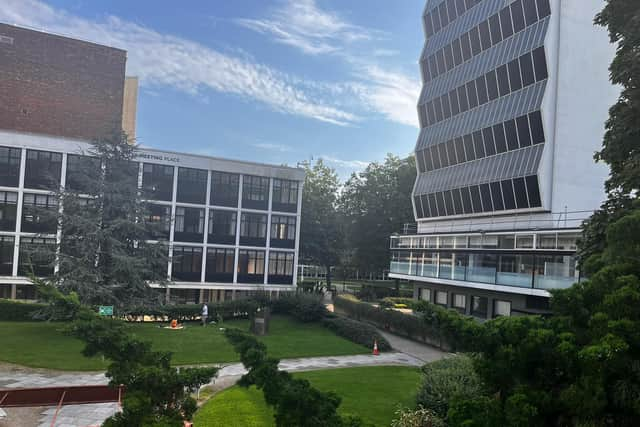

Combining new and old
There were also several positive examples of change in the city centre that our guide was also quick to point out. We briefly stopped at Kampus, the new canal-side neighbourhood in the heart of the city that includes apartment blocks, several food and drink spots and an open courtyard where there are regular community events and festivals. Here, new buildings exist alongside the Victorian buildings, which have been repurposed.
London Road Fire Station, where we ended the tour, is another example. This huge site right next to Piccadilly station was closed in the 1980s and left unused, but over the last few years it is being restored and redeveloped by Allied London into a boutique hotel, retail and residential space, with a courtyard at the centre.
- More information about SAVE Britain’s Heritage can be found on their website, including how to purchase their new report ‘Boom not Bust: How Greater Manchester can build the future without destroying its past.
Comment Guidelines
National World encourages reader discussion on our stories. User feedback, insights and back-and-forth exchanges add a rich layer of context to reporting. Please review our Community Guidelines before commenting.
